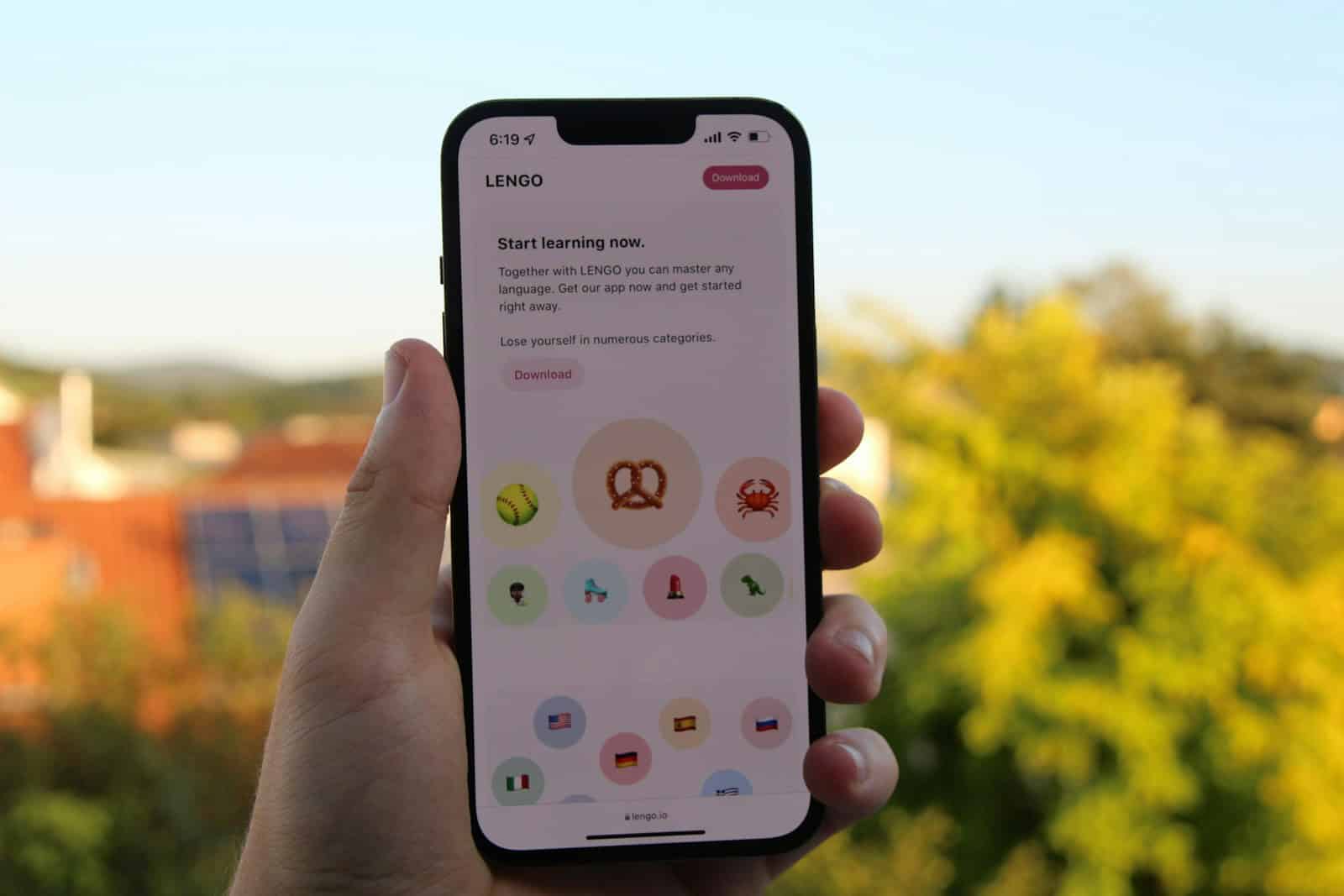Learning Spanish is no longer confined to classrooms or textbooks—today, your smartphone can be your most powerful language tutor. In 2025, language learning apps have become more immersive, intuitive, and effective than ever before, catering to every learning style. Whether you’re aiming to travel, work abroad, or simply explore a new culture, the right app can make your Spanish-learning journey enjoyable and productive.
The key to success lies in choosing a tool that matches your goals—some apps focus on gamification, others emphasize conversational fluency, and some offer full immersion through media. Below, we highlight the easiest and most user-friendly Spanish learning apps that are making waves this year, backed by user reviews, learning science, and platform innovation.
Best Spanish Learning Apps in 2025
1. Duolingo – Best for Gamified Learning
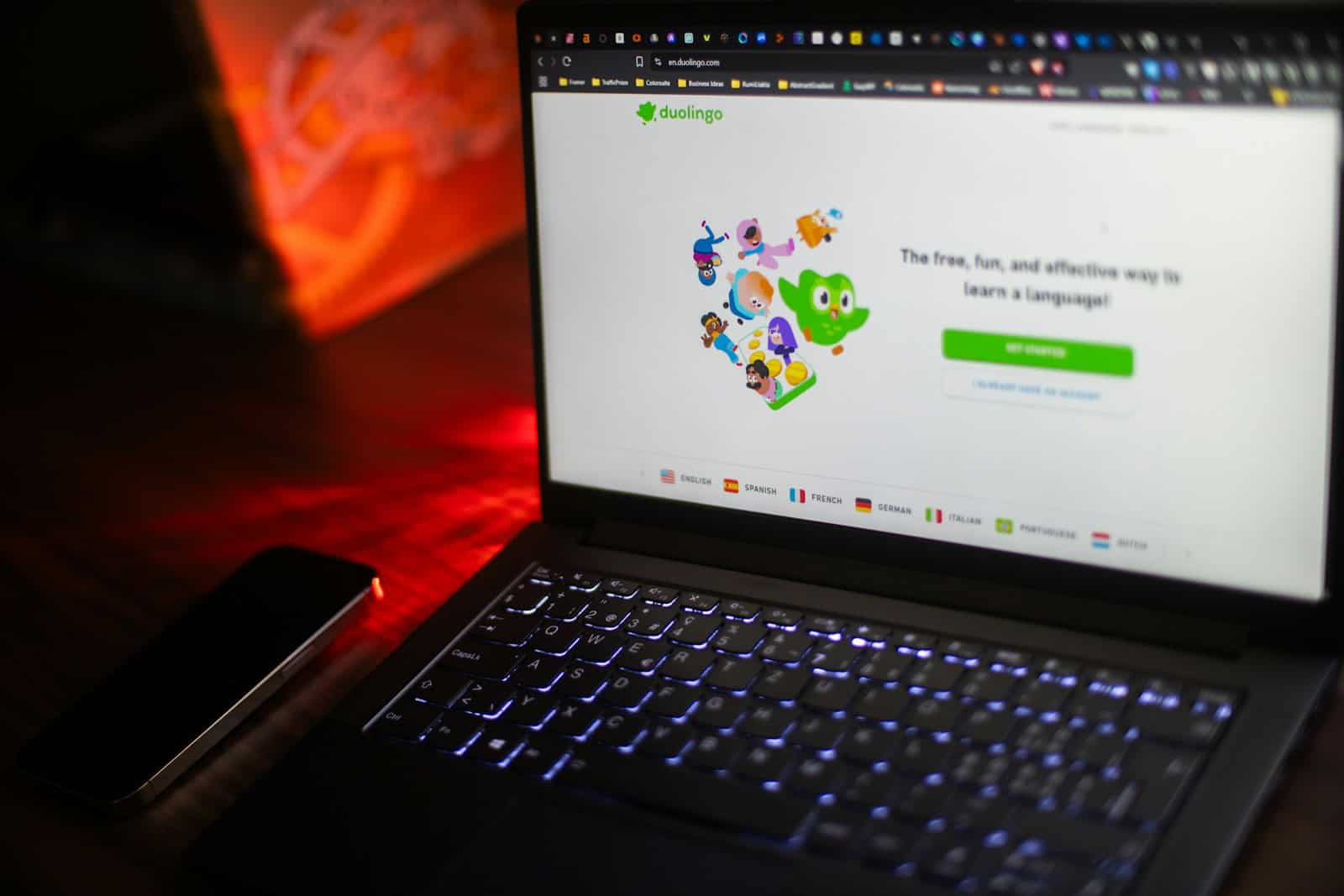
Duolingo continues to dominate the language-learning space with its bite-sized, game-like lessons and daily streaks that keep learners coming back. It’s ideal for beginners who want to ease into Spanish without feeling overwhelmed. The app uses spaced repetition, contextual sentence building, and reward systems that make it as addictive as a mobile game. Its newly added AI-powered features allow you to practice casual conversations with a chatbot, mimicking real-world Spanish interactions.
Why it’s great:
- Free with optional premium upgrades
- Motivating gamification system
- Great for daily micro-learning habits
2. Babbel – Best for Structured, Conversational Learning
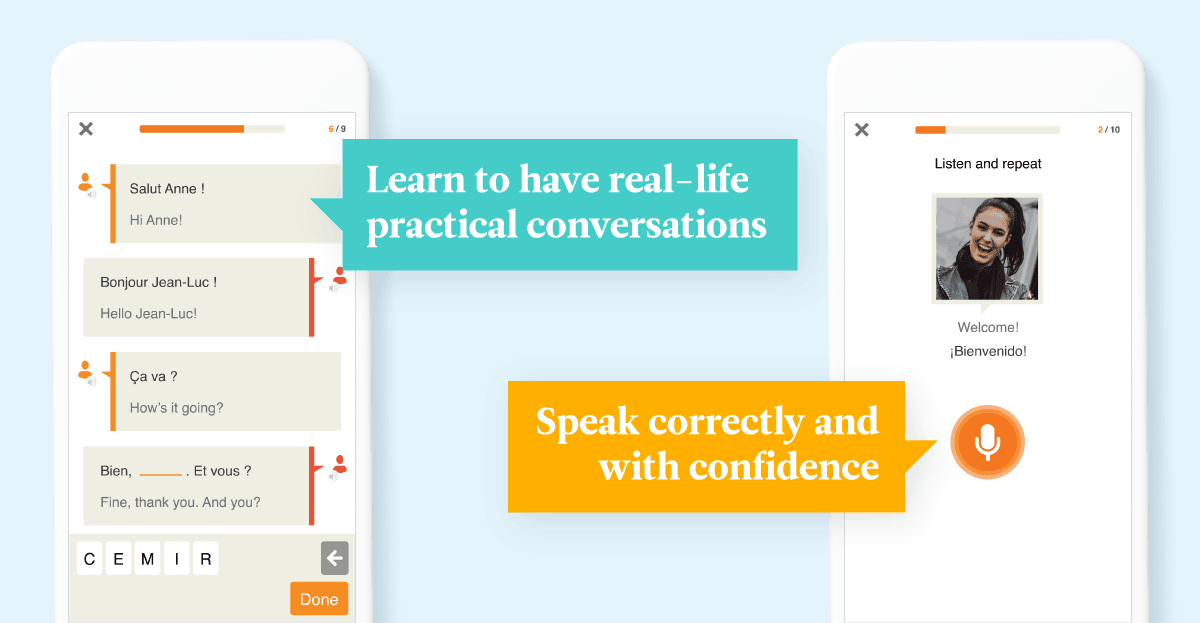
Babbel focuses on real-life Spanish conversations, making it ideal for professionals and travelers. Its curriculum is created by linguistic experts and offers grammar explanations alongside practical dialogue. It also includes cultural insights and pronunciation guides recorded by native speakers, helping users understand not just the words, but the context and etiquette.
Why it’s great:
- Emphasizes practical conversations
- Built-in speech recognition
- Short, structured lessons for consistent progress
3. Lingopie – Best for TV Show & Media-Based Learning
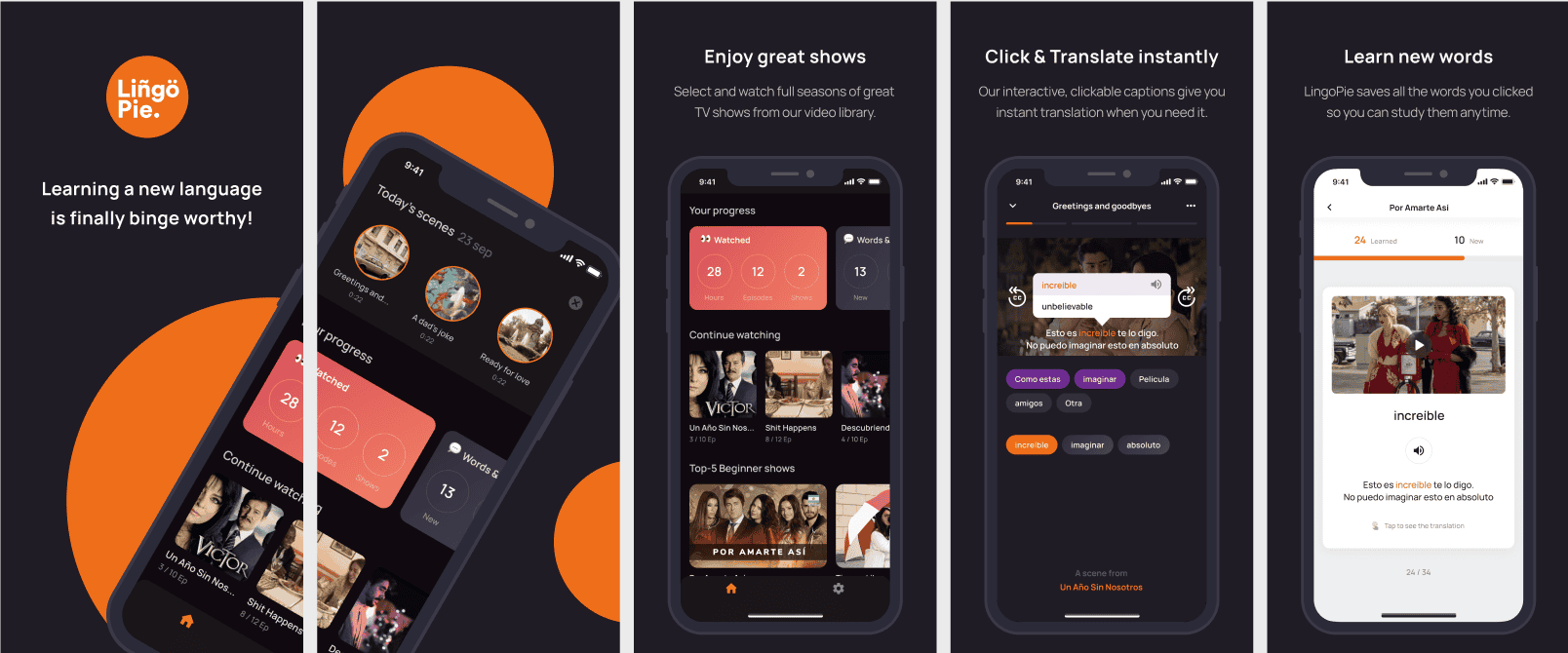
If you’re a fan of learning through entertainment, Lingopie is unmatched. It turns binge-watching into a study session, offering Spanish-language TV shows and movies with clickable subtitles. Hover over a word to see its translation, pronunciation, and add it to your flashcard list—all without pausing the video. This immersion method helps learners absorb natural language use, slang, and regional accents effortlessly.
Why it’s great:
- Full immersion in native Spanish media
- Vocabulary built from real conversations
- Great for intermediate to advanced learners
4. Pimsleur – Best for Hands-Free, Audio-Driven Learning
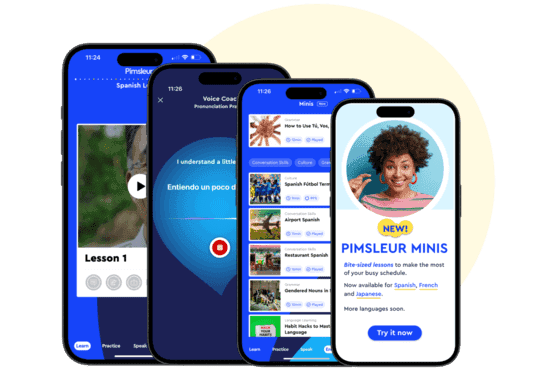
Pimsleur is the go-to for those who learn best by listening. Its Spanish program is based on the scientifically backed Pimsleur Method, which emphasizes auditory learning and verbal recall. It’s especially useful for commuters or anyone looking to practice Spanish while walking, cooking, or exercising. Each lesson focuses on building conversation skills progressively.
Why it’s great:
- Purely audio-based learning
- Strong focus on pronunciation
- Offline listening available
5. Memrise – Best for Rapid Vocabulary Expansion
Memrise excels at helping you remember words long-term through spaced repetition and real-life video clips from native Spanish speakers. The app’s quirky humor, mnemonics, and flashcard-based system make vocabulary building fun and highly memorable. Memrise also includes grammar tips and adaptive learning paths that change based on your performance.
Why it’s great:
- Excellent vocabulary retention system
- Engaging and humorous content
- Real-world language via video snippets
6. Busuu – Best for Community-Based Learning
Busuu is a social language-learning app that blends self-study with community feedback. Learners can complete exercises and submit them to native speakers for corrections, creating a peer-learning experience. It also uses an AI review manager to personalize your learning path. Busuu offers official CEFR-aligned Spanish lessons from A1 to B2, ideal for learners seeking structured progress.
Why it’s great:
- Practice with native speakers
- AI-tailored study plan
- Certificate options available
7. Rocket Spanish – Best for Comprehensive, All-in-One Courses
Rocket Spanish offers the most robust package for learners who want depth. It combines grammar, vocabulary, cultural notes, and interactive audio lessons into a single course. The voice recognition system is particularly useful for fine-tuning pronunciation. While it’s more of an upfront investment, it’s great for those who want a one-stop solution for serious learning.
Why it’s great:
- In-depth, structured curriculum
- Excellent speech practice tools
- Lifetime access with one-time purchase
Tips for Picking the Best Spanish App for You
- Total Beginners: Start with Duolingo or Babbel to build a foundation.
- On-the-Go Learners: Try Pimsleur for hands-free lessons.
- Visual or Auditory Learners: Go for Lingopie or Memrise.
- Community Feedback: Use Busuu to get corrections from real Spanish speakers.
- Serious Students: Invest in Rocket Spanish for the most comprehensive experience.
No matter which app you choose, consistency is key. Set daily goals, track your progress, and mix apps if needed to cover different skill sets—such as vocabulary, grammar, listening, and conversation. With the right tools and habits, learning Spanish can be easier and more enjoyable than ever. ¿Listo para empezar?
Key Takeaways
- The best apps to learn Spanish accommodate different learning styles and goals.
- A mix of audio, video, and interactive lessons facilitates language acquisition.
- Accessibility and ease of use are indicative of an app’s capacity to engage learners.
Choosing the Right App to Learn Spanish
Selecting the right application can be crucial for learning Spanish effectively. This decision depends on several important factors, and there are numerous apps that cater to different needs and preferences.
Factors to Consider
When choosing an app to learn Spanish, it’s key to consider the learner’s level. Beginners might prefer applications with a focus on vocabulary and basic grammar, while intermediate and advanced students could benefit from more comprehensive content. Cost also plays an important role, with options ranging from free apps to subscription-based models. It is essential to look for apps that include native speakers for pronunciation practice. Users should seek out apps that offer a testing feature to track progress.
Popular Spanish Learning Apps
Many language apps have gained popularity over the years. Duolingo, known for its game-like learning experience, offers free basic Spanish courses suitable for beginners. Rosetta Stone, designed for those seeking a more immersive experience, provides lessons that help in mastering the language like a native. Memrise leverages spaced repetition to build vocabulary, whereas FluentU uses real-world videos to teach Spanish in context.
Babbel, another popular choice, provides conversation-driven lessons, and Busuu allows users to practice with native speakers. For those who prefer audio learning, Pimsleur’s technique might be suitable. Mondly incorporates language games and chatbots to facilitate learning, and Mosalingua focuses on memorization techniques to boost language retention.
One must weigh these options against personal goals, available time and the level of engagement one seeks with the language and culture of Spanish-speaking countries. Pricing varies, from Pimsleur’s audio subscription service to Babbel’s lesson-oriented structure and free offerings from apps like Duolingo, making Spanish learning accessible to everyone.

